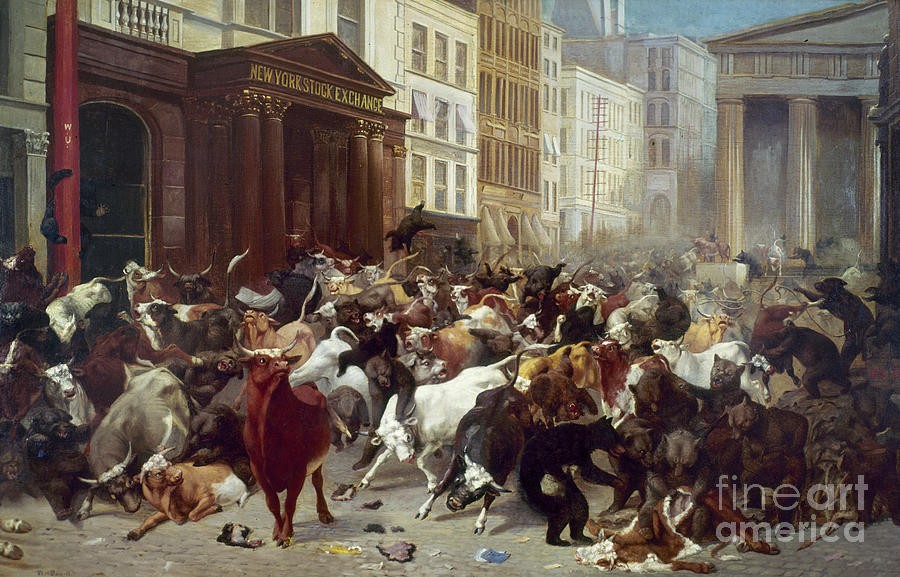Bulls and Bears of Wall Street
Post on: 7 Июль, 2015 No Comment

Bulls and Bears of Wall Street
The bulls and bears of Wall Street refer to specific market conditions. A bull market means that the market is heading upward, while a bear market means the opposite, and the market is heading in a downward trend. A bear market is characterized by a downward trend of the market over an extended time period, such as months or years. A bull market follows the opposite characteristics, in that the market is on an extended upswing instead of a downturn. The market is affected by many contributing factors, and is very closely linked to the overall economy, consumer spending, economic growth, investor confidence, and other factors.
A bull market is associated with wide consumer spending, high investor confidence in both the market and individual stocks and businesses, economic growth, a sound and stable economy, low unemployment and high job creation, profitable operation for businesses, and other contributing factors. A bear market, on the other hand, reflects the other side of the coin. During a bear market, investor confidence is low, businesses are not making large profits, employee lay-offs terminations are frequent, unemployment is high and job creation is low, the economy is slowing down significantly, economic growth slows or stops, and the entire country may be headed for a recession or even a depression.
A smart investor knows that money can be made in both bull and bear markets, but the strategies used for each market are usually different. There are certain stocks that are not affected substantially by market conditions, and these are termed defensive stocks. They include stocks in industries and companies that meet an unchanging need, such as utilities and other essential necessities that consumers must have, regardless of the shape of the economy. The demand for these products and services will not decrease significantly, even if consumer spending goes down extensively, because they are necessities and not luxuries.
Understanding bull and bear markets is important for any successful investor. The averages according to Wall Street are that bear markets are present for roughly one third of the time, and the other two thirds of the time a bull market exists. Usually a bear market is a good indicator of a recession coming, while a bull market will indicate when the recession is ending. The stock market fluctuates daily, but the extreme highs and lows will characterize many bull and bear markets, with bull markets often seeing new highs, and bear markets sinking to new lows.
The stock market will go up and down, and will change from a bull market to a bear market and then back again. Investors use strategies for both short and long term trading to help set buy and sell levels. A good investor will determine which stocks to buy and sell based on the strength of the stock and the underlying company, not just on market conditions. Many investors frequently make money on bear markets, and they can lose money on bull markets if they choose unwisely when buying stock or hold onto stocks when the bubble is getting ready to burst.
Bulls and bears can describe the market conditions, and the overall condition of the economy for the country, but this should not be the only factor considered when determining whether to invest and what stocks to invest in. A lot of investors wait for a bear market to go extremely low then they bu high quality stocks at discount prices, with the expectation that when the market rebounds the stocks will go up significantly. Smart investors know that the markets fluctuate, and during bear markets investors who buy are willing to hold on for long term if needed. In a bull market, investors who buy may plan on holding for long term or just short term, which can be as short as mere hours or minutes, depending on their individual strategies, in the hopes of making a short term profit.














